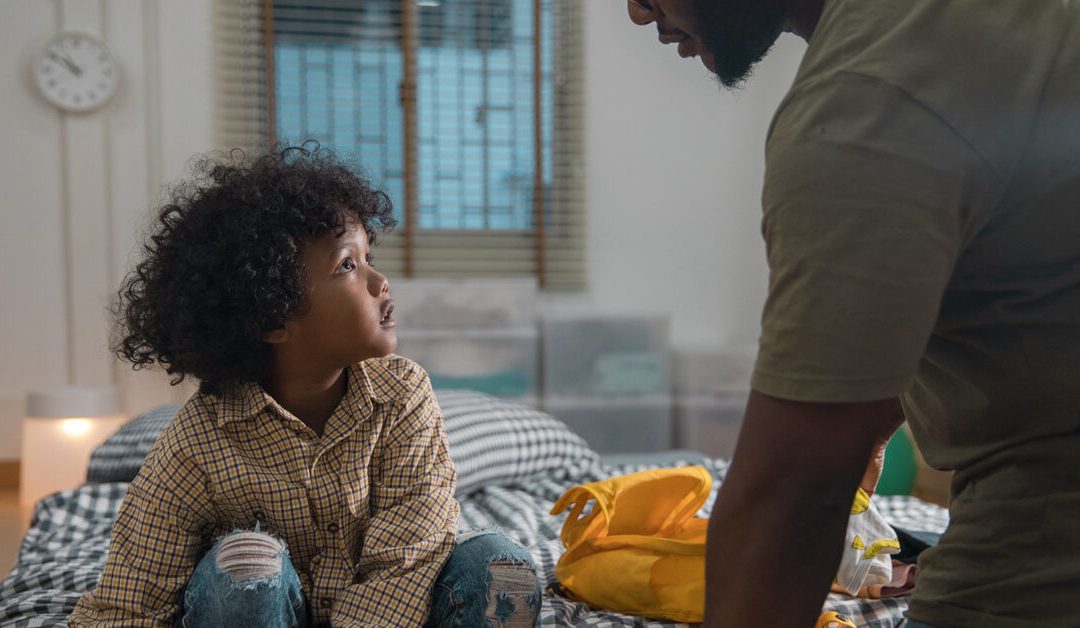Wondering how to best open the conversation? Not sure how to walk the fine line between sharing too much with your kids and too little?
Look to your child
“The key is letting your child lead,” Botnick emphasizes. “Ask them what they know first, so you can respond without adding a lot of new information and correct any inaccuracies. Be straightforward, but limit how much you share.”
Botnick also notes that less is more, particularly for young children, and when you feel too upset to stay calm. Offer simple, direct information and ask if they have any questions or additions.
The goal is to provide facts without giving them more information than they can handle at once.
Avoid empty reassurances
No matter how much you want to reassure your child, it typically doesn’t help to say things like, “Don’t worry, that will never happen at your school,” or “Everything’s fine.”
For one, they probably realize that everything is not, in fact, fine. They might also call you on the fact that you simply can’t know that for sure.
Avoid casting blame
If you feel angry about an average of 10 mass shootings a week, well, that’s a perfectly natural reaction. But blaming specific people or groups won’t address the larger problem of gun violence, and it likely won’t help you feel much better, either.
In some cases, doing so may even promote harmful stereotypes and lead your child to make assumptions about specific groups of people.
Keep it honest
Honesty is pretty much always the best policy, even when it comes to frightening news. That said, you’ll want to consider your child’s age and emotional needs when deciding how you share information.
If you can’t answer everything your child asks, it’s always OK to say so.
Older children and teens might feel more reassured when they have more facts and information. They’ll also respect you more if you admit you don’t know something rather than offer a vague or fudged answer.
Instead, offer your help with research so you can find the facts together.
Discuss safety measures
Botnick recommends framing conversations with school-aged kids around their safety.
“Make sure they know they’re being protected as well as possible, and steer the conversation toward the steps their school has taken to keep them safe.”
She also notes that it can help to mention positive things, like acknowledging people who stepped in to act bravely during a mass shooting or other traumatic event. You could also offer examples of specific actions people have taken to address gun violence.
Take their age into account
Tweens and teens might have more interest in the deeper issues around a mass shooting or other traumatic event, Botnick notes, so they may want to explore topics like emotional reactions and political ramifications in more depth.
“Sharing their outrage and concerns, while also modeling restraint, can help them feel understood,” she says.
Don’t try to solve it
Keep in mind that your kids may not always want a solution, if a solution even exists. Sometimes, they simply want to vent their pain and frustration.
You can help by acknowledging that distress — “I know you feel scared right now, I do, too” — without automatically switching to problem-solving mode.
Emphasize the importance of self-care
Showing your kids how you take care of yourself during difficult times can teach them to practice those same skills.
Aim to:
Botnick also emphasizes that kids of all ages might benefit from exploring ways to take action, which can help them avoid feeling trapped in feelings of helplessness and despair.
That could mean contributing with them to a charity, or attending (or planning) a discussion event so they can learn more about potential actions they can take.
It’s OK to need a little more support
Maybe you notice your kid seems to have a particularly challenging time coping with distress around mass shootings. If you think they might benefit from more help than you can offer, a good next step involves reaching out to a therapist.
Trained mental health professionals can support your child in exploring difficult emotions they don’t know how to share. They can also offer guidance on productive coping strategies.
This content was originally published here.

